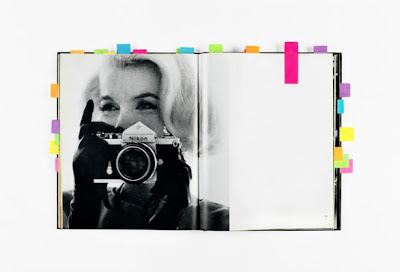As strange as it may sound for a girl form rural Wales, I have always had an affinity to China. I have been fortunate enough to spend a month in Shanghai on the 'Study China Program' and a few weeks with a my Chinese friend Karen in her hometown of Guangzhou and the surrounding area. I am fascinated by the culture, the people, the landscape and the language. It is so foreign and different yet at the same time welcoming and comforting. Therefore it will come as no surprise that I was extremely eager to see the Imperial Chinese Robe exhibition at the V&A. My trip to Japan and my visit to Tokyo's National History Museum also incited my interest in historical Asian dress with its magnificent display of Kimonos. The imperial Chinese Robes in the V&A's exhibition are the clothing of the emperors of the Qing dynasty (1644-1911). It is so interesting to discover the link between Hanfu (the clothing worn by ordinary people before the Qing dynasty) and the Japanese Kimono. And I'm really excited to explore this link further in my essay and broaden my knowledge of a subject which is of real interest to me but of which I know so little.
The exhibition is incredible. It's the sort of thing you can't really summarize or put into words because it is an absolute feast for the eyes and a visual spectacle. Apart from my sheer admiration at the detail and exquisite craftsmanship (the weaving of a robe could take as many as a thousand days and even the smallest woven peony was depicted in at least 3 shades of violet), I also learned a considerable amount about the extreme regulation underpinning the wearing of the robes.
- There were 5 categories of formal wear: official, festive, regular, traveling and military. These were then sub-divided into summer and winter.
-Symbols and traditional motifs played an extremely important role:
* Phoenix- the bird of good omen
* Butterflies- joyful connotations and the subject of puns and stories
* Swastika- the symbol for 10,000 signifying ten thousand years to the dynasty
* Buddhist symbols- for decorative not necessarily religious purposes
* Double happiness character
* Tiger motifs- used on children's clothing to chase away evil spirits and because it sounds similar to the word for wealth
* Twelve symbol- worn by the emperor alone and to represent his supreme authority
* Dragon and wave motifs- seen on Festive Robes
* Peaches, cranes, rocks, bamboo, lingzhi fungus- symbols of longevity
 Imperial concubine's festive robe
Imperial concubine's festive robe
1736-1795 (Qianlong period)
Yellow silk with woven pattern
Length150 cm x width 176 cm
On loan from the Palace Museum, Beijing
The phoenix motif, traditionally a symbol of the empress, was allowed for imperial concubines and princesses as well.
The vast amount of motifs made me consider whether symbols play any importance in our clothing today? Or has the symbol been replaced by the importance of the brand? One is certainly more likely to see a t-shirt emblazoned with a Vuitton logo than a subtly incorporated four leaf clover. Perhaps the primary function of clothing used to be as an indicator of cultural identity and traditional values. Today, however it is widely used as a display of status, wealth and personal identity.
 Emperor's summer court robe
Emperor's summer court robe
1851-1861 (Xianfeng period)
Length 140 cm x width 182 cm
On loan from the Palace Museum, Beijing
This court robe is embroidered with twelve small motifs: sun, moon, constellation, mountain, dragon, flowery creature, axe head, back-to-back ji, sacrificial vessels, waterweed, flame and grain; known as the Twelve Symbols.
The symbols represented the emperor's utmost authority and were worn by him alone. The Twelve Symbols undoubtedly have ancient roots that were much older than 1644. Emperors from the previous dynasty, the Ming, also wore robes adorned with these symbols.
-The colour of the robe was also subject to regulation
* Red- the colour of weddings in China
* Bright yellow- reserved for robes worn by the empress
The colours of the Official Dress were symbolic of the following natural forces or seasonal order-
*Blue- Sacrifices at Altar of Heaven
*Yellow- Altar of Earth and reserved for grand occasions such as ascension to the throne, New Year's Day and the emperor's birthday
*Red- Altar of Sun
*Pale Blue (also known as 'moon white')- Altar of Moon
 Emperor's winter court robe
Emperor's winter court robe
1796-1820 (Jiaqing period)
Red satin with embroidered pattern
Length 144 cm x width 200 cm
On loan from the Palace Museum, Beijing
Red was the colour designated for the Altar of the Sun.I did not realize that Zhangzhou in South China was the first city to produce velvet. It is due to this that many velvets are called "Zhang Velvet" regardless of their place of manufacture.
It was interesting to note some adaption to the robes which occurred due to influence from the west. This was responsible for informing the slimmer cut of the ladies robes. In addition Catholic nuns in the late 19th Century introduced lace making techniques to the Chinese. Despite these subtle influences, the robes remained loyal in recalling their nomadic Manchu heritage.
 Imperial concubine's riding jacket (magua)
Imperial concubine's riding jacket (magua)
1875-1908 (Guangxu period)
Green satin with woven pattern, sable and lace
Length 80 cm x width 125 cm
On loan from the Palace Museum, Beijing
This jacket has three different borders, one made of fur, one of woven satin, and one of lace. Lace making was not a Chinese technique but one introduced by Catholic nuns in late 19th century.




